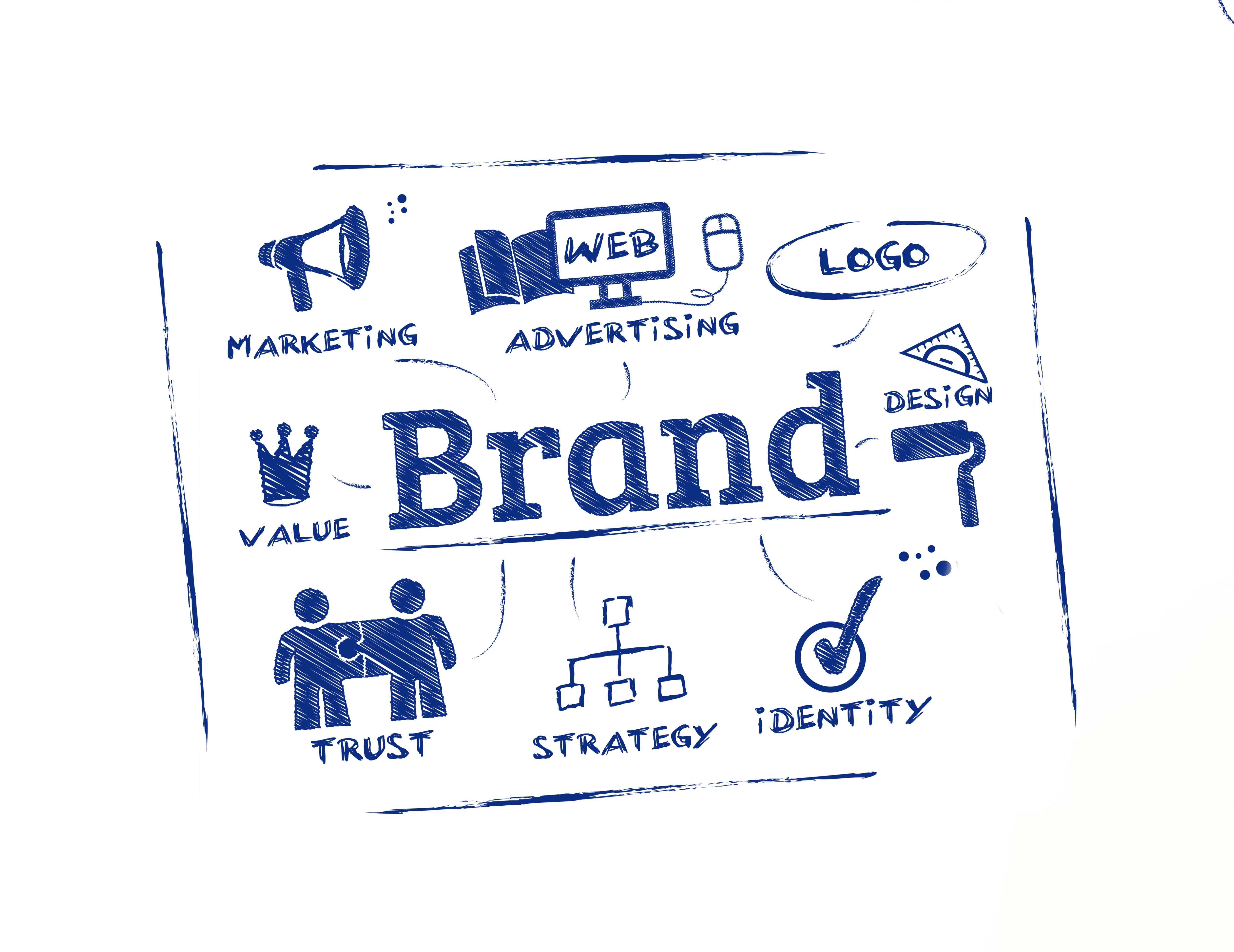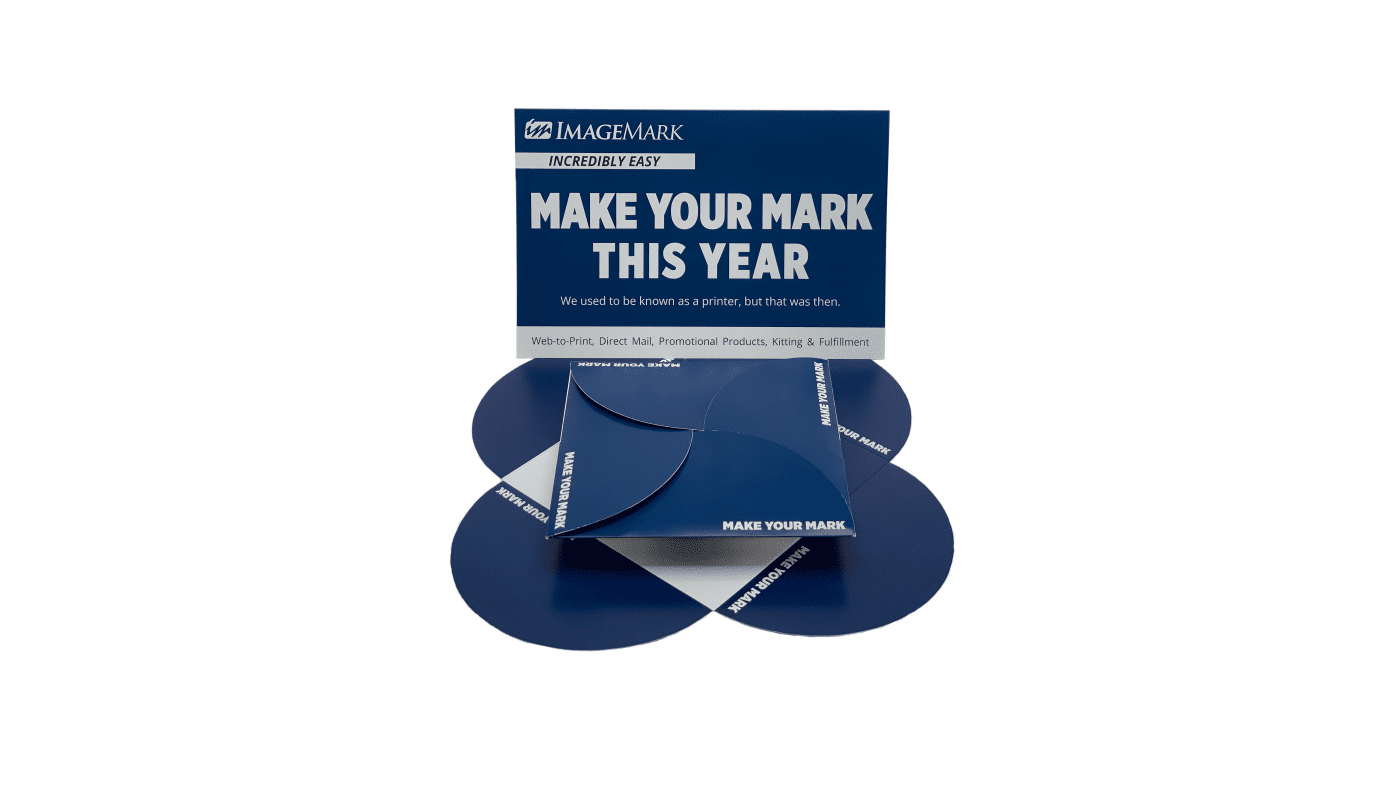
In today’s times of uncertainty, it can be challenging to know how to strike the right tone. While consumer spending remains strong, there is still much uncertainty about the future. Some Americans are doing quite well. Others are still struggling. For marketers, this means crafting messaging that is both optimistic and sensitive. It can be a tricky balance. Here are five tips for getting it right.
1. Exude confidence.
During difficult times, people flock to leaders who exude confidence. Brands can inspire, motivate, and make people feel that everything will be okay. Reach out using the theme, “We’re here to help.”
2. Invest in social and environmental justice.
Consumers like to align with brands that “do good.” Promote your support for socially or environmentally conscious organizations and let people know about it. For example, a SheerID study found that, during the pandemic, 68% of respondents wanted brands to donate to programs that provided direct support for medical workers.
3. Offer a helping hand.
While the U.S. economy continues to grow, this is still a time of struggle for many. Offer deferred payments, ideas for lowering expenses, and so on. Even if your customers don’t need the help themselves, this kind of care for others builds brand equity that pays off in the long run.
4. Show off your expertise.
This is a great time to share meaningful expertise with your customers. Think “Top 5 Ways to Save on Lawn Care” or “3 Plumbing Fixes You Can Do Yourself.”
5. Make your customers’ lives easier.
When the world is uncertain, consumers want to feel that they at least have control over their own homes and families. Position your products in terms of how they can help your customers make lives safer and easier, even in small ways. “Let us help you save 10% on your home electric bill,” or, “We’re offering FREE delivery of pool chemicals all summer long so you can relax at home!”
Brands can play a positive role in helping their customers through uncertain times. Striking the right tone tells your customers that you are paying attention… and that you care.

Think you can’t afford direct mail because you’re a local business with a tight budget? Think again. With USPS Every Door Direct Mail (EDDM), you can send targeted direct mail for a postal cost of $.20
or less per piece. Even target addresses by age, household income,
or household size.
Use EDDM for just the right audience:
- Grand openings
- Local sales and promotions
- New locations
- Discounts and coupons
- Local events and more
Contact us to find out how!

You come home from work and discover that you received a direct mail piece. Nice! We all love mail. But then you talk to your neighbor, and they got the same piece in their mailbox. Then you talk to another neighbor, and they got one, too. So did the neighbor across the street and the neighbor the next road over. So much for feeling special.
Personalization matters. It makes people feel valued, especially when it arrives in print. Digital personalization is all around us, from Amazon recommendations to shopping cart abandonment reminders, but personalization in print marketing is less common. It stands out.
While personalization in print stands out for relevance, it increasingly stands out for another reason: respect. What do we mean by that?
Personalizing your print communications shows respect for the recipient’s time. Nobody has time for irrelevant mail anymore. Buyers know that personalization is possible—they even expect it. They look for it, and they recognize it when they see it. By personalizing the piece, the recipient knows that you’ve taken the time to create something just for them. They know that when they open it, they are less likely to find something irrelevant that is a waste of their time.
It’s no wonder that, in a classic InfoTrends study on the value of print personalization, when consumers were asked how providers can improve the value of their direct mail communications, two of the top three responses were “make them relevant to me” (34%) and “personalize the content for me” (28%). Do you know the top reason for marketers to personalize their transactional mail, in particular? “Make it easier to understand,” with 43% giving this answer. This, again, shows respect for the recipient’s time.
It’s no wonder that when asked how personalization affected the amount of time consumers spent with marketing mail, nearly half (49%) agreed that they spend “much more time” reading direct mail that is “personalized and relevant” to them than they do with generic direct mail.
The data continue to tell the story. You’re missing a massive opportunity if you’re not personalizing your print or digital communications. Need to get started? Let’s do it!

Targeting is the foundation of any highly effective marketing campaign, but there are different ways to slice and dice your list based on your marketing goals. Here are four different ways to target your audience. Which approach might work best for your next marketing campaign?
1. Demographics.
Demographics such as age, gender, ethnicity, and household income are simple but effective to focus your messaging. For example, if you are selling jewelry, you might show different collections to different recipients based on household income. If you sell automobiles, you’ll select other vehicles for those just out of college versus those married with young children.
2. Lifestyle.
Lifestyle data pools target audiences based on shared interests, such as fitness and wellness, green living, or pet ownership. Two people who look very different demographically may both love dogs or snowboarding. There are many ways to get at lifestyle data, including magazine subscriptions and past purchases.
3. Life stages data.
Whether young or old, rich or poor, we face common life stages. For example, new parents deal with diapers, and recent college graduates need to furnish apartments. Retirees may be looking to downsize, travel, or invest in a lasting legacy. Targeting based on life stage is different from targeting based on age or generation in that two shoppers might be the same age but at very different stages in life. For example, one might still be single and living at home, while another might be married and with young children. Even though they are the same age, their needs and priorities will differ.
4. Past purchases.
We can infer a lot about someone based on what they buy. If they just purchased a new pool, they’ll likely be in the market for pool accessories, too. If they just purchased home improvement supplies, there’s a good chance they’ll be in the market for new appliances.
Want to learn more about any of these data types and how to develop campaigns around them? Let us jump in and help.

For B2B marketers, integrating brand identity into marketing and sales collateral can be a real challenge. According to Provoke Insights, there are three main reasons:
1. 60% cannot ensure that brand assets will meet brand standards.
2. 31% lack brand standards.
3. 24% have no centralized library of approved brand assets.
Marketing solutions within reach!
Technology makes it easy to set up an online portal for all of your brand assets, along with a library of brand-approved templates for your most-ordered projects. Add rules for who can access which assets, which assets will be locked down, and how approvals will be handled, and brand management becomes a breeze.

Are you up for a surprise? In a customer satisfaction study of 10 major industries, nearly three-quarters (72%) of respondents indicated that they were delighted with the products or services they purchased, yet 88% said that they were willing to switch providers for any reason!
How can this be? If customers are happy with the products they buy, how can they switch so easily? Because so many companies offer products and pricing similar to one another’s. That’s why maintaining customer loyalty takes more than the basics. You have to make people feel valued, not just by offering them great stuff, but by how you treat them. Give them a great customer experience.
According to Price Waterhouse Coopers, 73% of consumers consider customer experience important in purchasing decisions. This means that all things being equal, they will go where they feel most valued and appreciated.
That’s why a consistent, high-quality drip of customer communications is so important. It makes customers feel noticed and valued, not just when you want them to purchase something.
- Set up a series of “nurturing” mailers throughout the year. Make it a continuous client contact program that demonstrates that you are sincerely grateful for their business at regular, pre-planned intervals.
- Use the data you’ve collected to grow your relationship with these customers. Offer valuable tips, newsletters, and case studies that remind clients of your commitment to service, value, quality, innovation, and loyalty.
- If you are going to cross-sell or upsell, make those suggestions valuable and relevant to your customers based on the information you have collected, such as their past purchases or subscriptions that are expiring.
- Ask for their feedback. People love when you ask their opinions. Now act on what you learn. Communicate through tangible actions that you not only care about what they have to say but are willing to act on it, too.
Direct mail isn’t just for customer acquisition marketing anymore. It is a critical part of effective customer retention.

Increasingly, marketers understand the power of emotions. Product features and benefits are essential, but someone’s need, fear, or desire often motivates the actual purchase. Just look at some of the most iconic brands on the market. Johnson & Johnson doesn’t sell Band-Aids based on their adhesive properties. It shows a crying child being soothed by a loving parent. Nike doesn’t sell shoes based on the resilience of its soles. It shows athletes overcoming obstacles and achieving greatness.
Here are three ways you can tap into emotion in your marketing.
1. Think “simple” or “complex.”
Simple sales are those for which people can make quick, easy decisions based on numbers: This product is 10% cheaper than that one. That product offers 25% more longevity than the one I have. However, with complex decisions like financial, insurance, and medical products, emotion plays a much more significant role. What makes me feel safe? How can I best protect my family long-term? When writing your product copy, think about which category your products fall into.
2. Be authentic.
Nobody likes a phony. That includes customers. Honesty makes consumers feel connected and creates trust and respect for the brand. Consider Allstate Insurance. In its 30-second slice-of-life commercials, homeowners fall prey to their humanness by opening car doors into oncoming traffic or crashing into parking lot barriers because they’re looking at their children’s birthday balloons in the rearview mirror. We’ve all done it. It feels natural and familiar. Be honest, and make your brand something people can relate to.
3. Think beyond the sale.
Show an interest in your customers and prospects beyond the sale. Drop them tips and tricks that help them with everyday problems. Create emotional engagement that transcends the immediate need. Stanley Steemer does this well. It sends a high number of direct mail pieces and emails every year. While some of these pieces are designed to sell, cross-sell, and upsell, the majority are tips for various household cleaning projects. This is information people can use whether they end up purchasing Stanley Steemer services or not.
Emotion and brand connection sell. Maybe not right away, but over time. So be honest, be relatable, and invest in your customers long-term. It takes more effort, but it pays off in the long run.

To create genuinely personal communications, you need to know your customers. This requires more than knowing basics like name, address, and gender. It requires knowing more about who your customers are.
Let’s take an example from the world of sports. For example, when we think of hockey fans, we might think of demographics such as age, gender, and region of the country in which a fan lives. But did you know that National Hockey League (NHL) fans are the most affluent sports fans in the country? (Out of all major league sports, the NHL has the highest percentage of fans earning more than $100,000 per year.) Or that half of Major League Baseball fans are retirees? Or that 40% of NASCAR fans are women?
The starting point for any targeted or personalized campaign is knowing the make-up of your audience. If you don’t have this information, make it one of your goals to find out. Send a direct mail or email survey or conduct a focus group. Add survey forms on your website or purchase additional data to fill in the gaps.
Don’t stop there. Ask yourself what else you might not know about your target audience that would be helpful. When the NHL started personalizing its fan communications, for example, it asked them to fill out a survey that indicated where they lived and their favorite hockey team. The NHL discovered that 40% of its fan base lives outside their favorite team’s home market. Imagine the marketing opportunities for the league!
Know your customers from the inside, too.
- Consider investing in fundamental database analysis. Identify your top 10% of customers by frequency, volume, and revenue.
- What do those customers “look” like? Create a set of customer profiles.
- What does each profile have in common (age, income, marital status, purchase habits)? In a B2B environment, you might look at the vertical market, employee size, and annual revenues.
- Get to know your bottom 10%, too. What do they look like? Are they customers you can woo back?
There is an infinite number of questions you can ask, but they all start with knowing who your customers are in the first place.

If you want to know what’s working, test it. Is this recipe better than that one? Is this pair of shoes more comfortable than those? Marketing is no different. By taking a portion of your list and testing one element at a time, you can find out what works best. Even if you’ve done testing in the past, things change. It’s essential to keep testing to make sure you know what is working now.
Unbounce, a service that allows marketers to build, publish, and test landing pages, has described the impact of testing on three different companies and the lessons learned from each. Let’s take a brief look at each one.
Test #1: Great ads can get better.
SafeSoft Solutions had a slick, professional ad that was doing well. The headline promoted productivity and efficiency. It used attention-grabbing, easy-to-read bullet points to outline the benefits of its services. But the ad did not contain pricing information. SafeSoft decided to test the addition of a green starburst with its pricing inside. The result? A 100% increase in conversions.
Test #2: Not all trial offers are created equal.
For some companies, a seven-day offer might be perfect. For others, customers might need a more extended test-out period. When HubSpot split tested its trial offer, it found that prospects required more time to make a decision. By testing a 30-day trial over a seven-day trial, it was found that it could boost conversions by 110%.
Test #3: Location matters.
Does the placement of the CTA make a difference? Inbound Strategy wanted to find out. It tweaked its site’s landing page, added more information, and played with the location of the CTA. The results? When the CTA was moved from the right-hand side of the page to the left, there was a 217% increase in conversions compared to the control.
These examples have lessons for us, as well. Whether you are working with print, email, landing pages, or any other channel, you’re missing opportunities if you’re not doing split testing regularly. What insights and higher conversion rates might you be missing?

For many businesses, direct mail letters are their “go-to.” They are inexpensive to produce, can include BREs and other inserts, and depending on the design, can seem more personal than self-mailers. Still, the popularity of self-mailers is growing. They, too, are inexpensive and have many benefits.
Self-mailers are created when a single piece of paper is folded to create a self-contained mailing format. Depending on the size of the sheet, self-mailers can be folded into two or more panels. They can be sealed using glue lines, wafer seals, or glue spots along the edge.
Let’s take a look at some of their benefits:
- Because they require no envelope, self-mailers have no envelope or inserting costs. This makes them a great option for tight budgets.
- When unfolded, self-mailers provide lots of real estate for graphics and messaging.
- Even on digital presses, self-mailers can be printed on a wide variety of substrates, including heavier substrates.
- While we tend to think of self-mailers as simple, folded formats, their substrate flexibility allows them to include pockets and interior panels into which you can insert gift cards, reply cards, or small samples.
- Because self-mailers can be digitally printed, they can be fully personalized like any other mailer.
Self-mailers are readily identifiable as marketing mail, so they can have lower response rates. For this reason, some businesses use them for mailing to people with whom they already have a relationship—loyal customers who will open them simply because of their relationship with the brand. Others use them for campaigns in which people want promotional mail. Examples include promotions around clearance sales, new store openings with discounts, and free samples. We see them heavily used around college recruiting, as well.
In the end, choosing the correct format depends on your target audience and the goals of the campaign. Testing will be critical in helping you identify when and where each format will work best for you.
